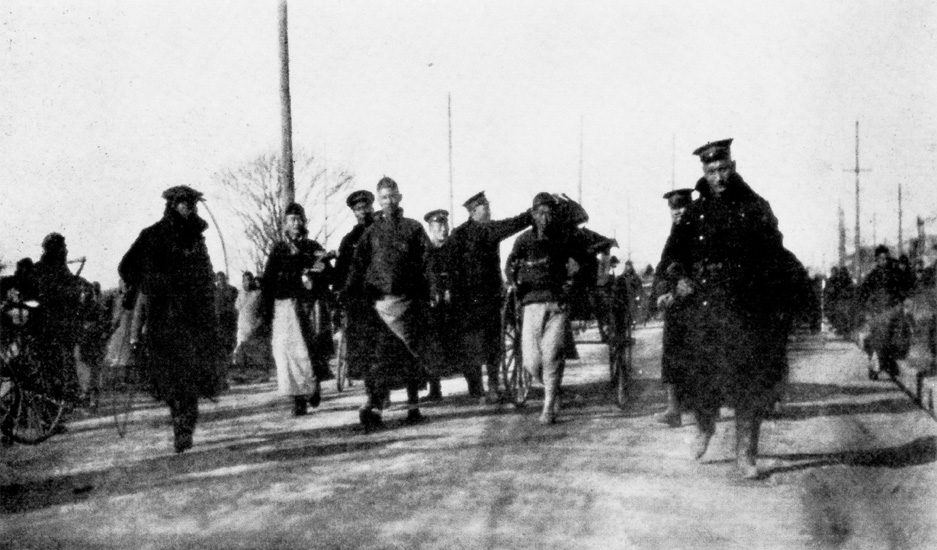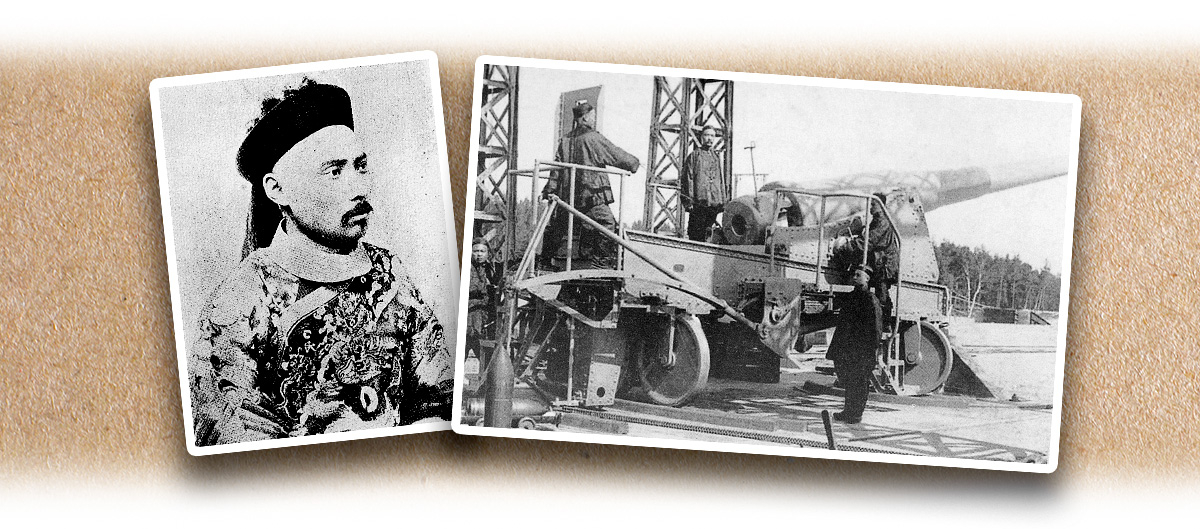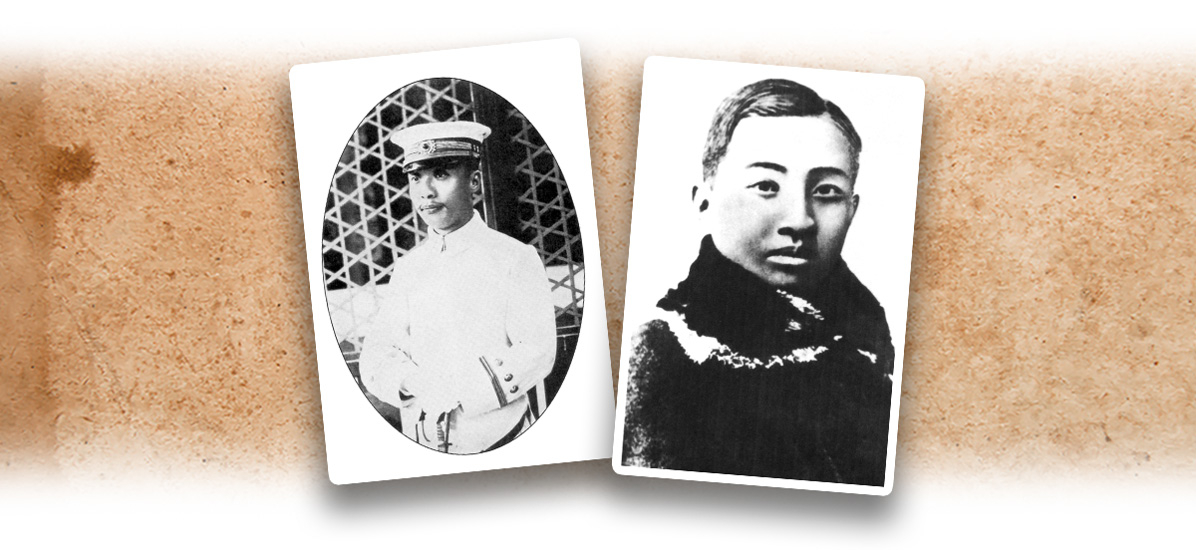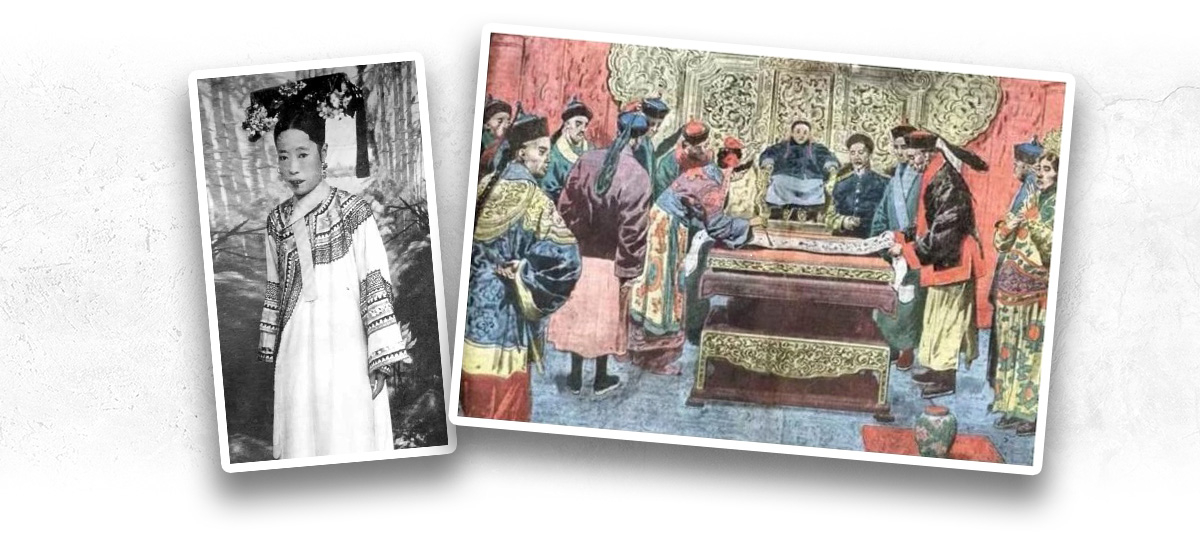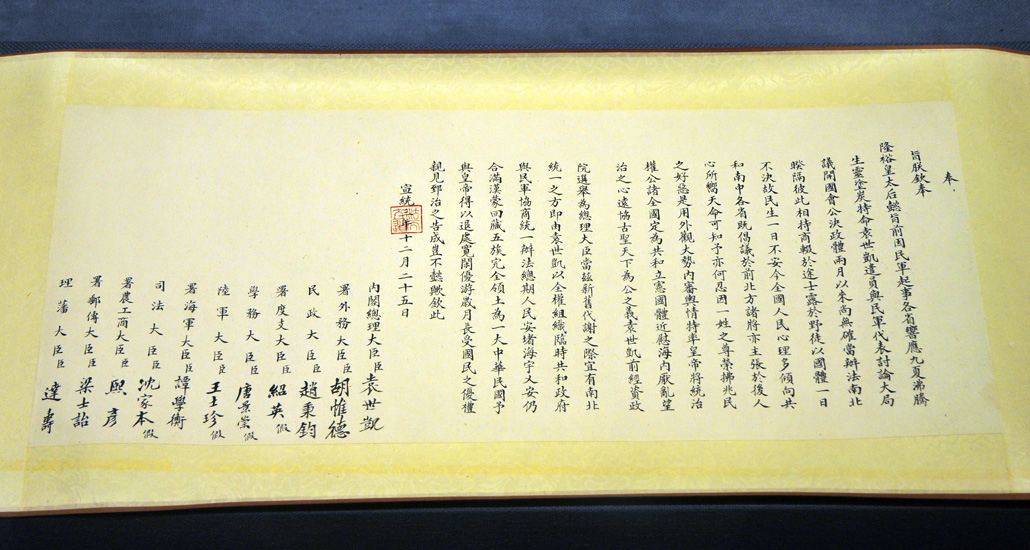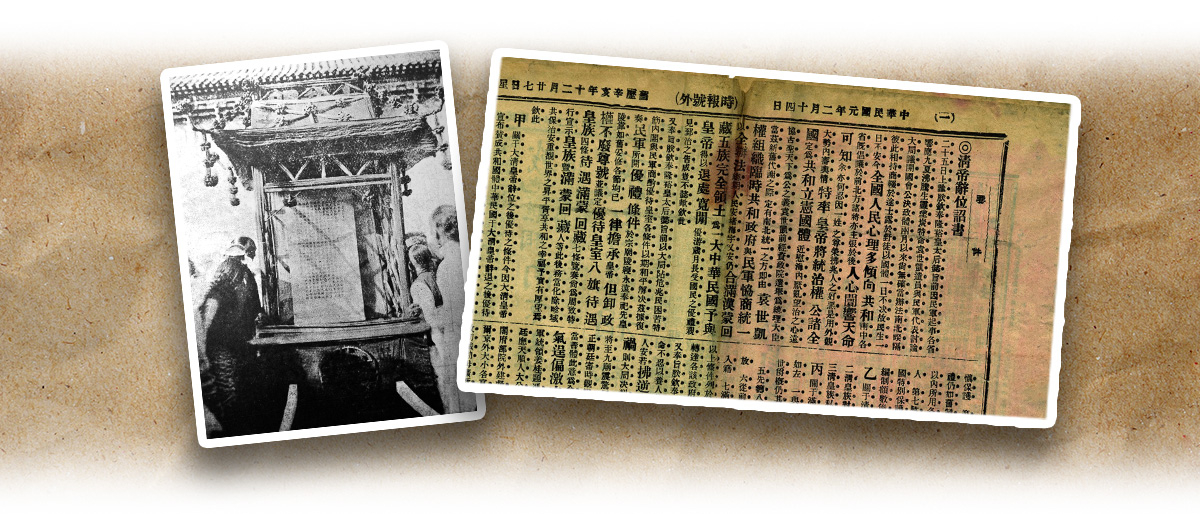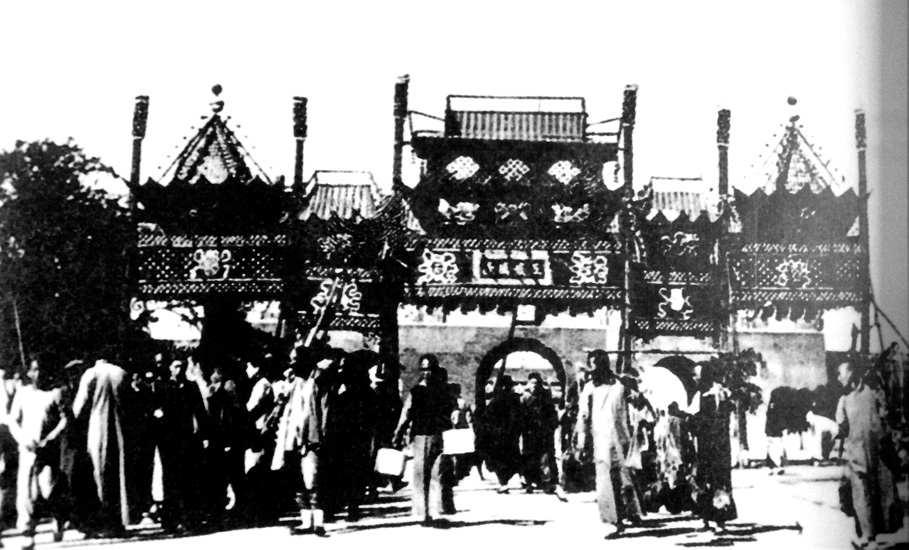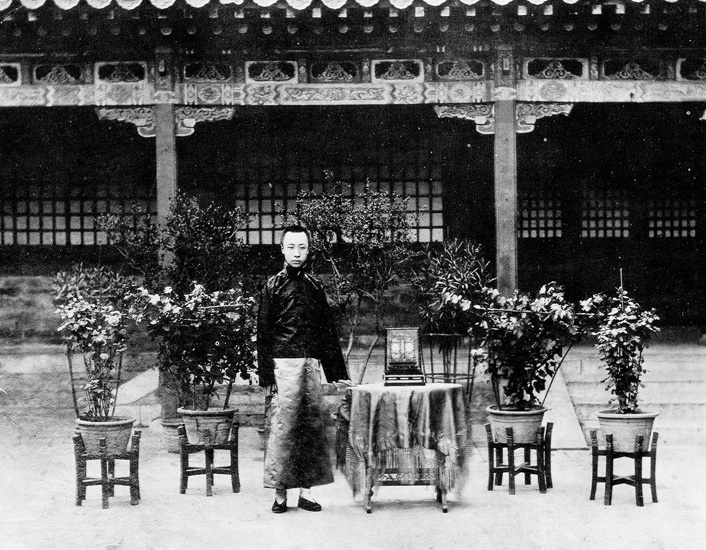When the Xinhai Revolution (辛亥革命, or 1911 Revolution) erupted on 10 October 1911, most of China swiftly responded to it. On 1 January 1912, the Republic of China was officially founded. Although the country was out of its control, the Qing government did not give up its rule and the emperor remained enthroned. For a brief period, China was both a monarchy and a republic.
At that time, Yuan Shikai (袁世凱) held the Qing dynasty’s military and political power. After being promised the position of provisional president by Sun Yat-sen (孫中山) and the revolutionaries, he declared his support for the Republic and started to pressure the Qing emperor to abdicate. On 26 January, acting on Yuan’s direction, Duan Qirui (段祺瑞) led the Beiyang generals to send two telegrams titled the Telegram from 50 Beiyang Generals Appealing for the Acceptance of the Republic (《北洋五十將乞共和電》) and the Second Telegram Appealing for the Acceptance of the Republic (《乞共和第二電》) to the imperial household. In these telegrams, they requested the Qing government to “issue a public imperial edict to proclaim to all within and outside China that China is to become a republic”.
On 3 February, Empress Dowager Longyu (隆裕太后) granted full permission to Yuan to negotiate the abdication terms of the Qing emperor with the Nanjing (南京) Provisional Government. On 6 February, the Articles of Favourable Treatment of the Qing Imperial Household (《清室優待條件》) were passed by the Nanjing Provisional Senate. The articles guaranteed the imperial household an annuity, the right to reside temporarily at the Forbidden City (紫禁城), protection for the perpetual observances at the imperial temples and tombs as well as military protection of its private property.
On 12 February 1912, the Articles of Favourable Treatment of the Qing Imperial Household were accepted by Longyu, who managed state affairs on behalf of Emperor Xuantong (宣統). She then issued the Imperial Edict of Abdication of the Qing Emperor (《退位詔書》) to announce the emperor’s abdication. It officially brought an end to the 268 years of Qing reign and the Chinese monarchy of more than 2,000 years old.
|
|
Emperor Xuantong officially abdicated on 12 February 1912. Why is the Qing dynasty often dated as beginning in 1644 and ending in 1911? |
|
|
See answer below. |
The photos above (from left) show Aisin Gioro Puyi (愛新覺羅‧溥儀) at age 3 and age 6. Puyi was just 3 years old when he ascended to the throne in 1908, with the reign of Xuantong. When the Xinhai Revolution erupted on 10 October 1911, the 6-year-old Puyi was totally out of his depth.
When the Wuchang Uprising (武昌起義) broke out, the Qing government tasked Yuan Shikai with suppressing the revolution. The revolutionaries resisted the Qing military while scheming to assassinate Yuan and other Qing officials. On 16 January 1912, Yuan became the target of a bomb attack launched by the revolutionaries. Several people were killed or injured in the incident. The picture shows police transporting the hooded bomb attacker under arrest by rickshaw. Although Yuan was unharmed, the assassination attempt shocked the Qing government.
On the left: Duan Qirui in Qing dynasty official uniform; on the right: Duan (first figure from the right) undergoing artillery training in Germany. Duan helped Yuan Shikai found the Beiyang Army, and was known as a member of the “Beiyang champion trio” with Feng Guozhang (馮國璋) and Wang Shizhen (王士珍). On 26 January 1912, acting on Yuan’s direction, Duan led the Beiyang generals to send two telegrams to the Qing imperial household demanding that “China is to become a republic.”
The Qing government faced mounting pressure from the revolutionaries. On 26 January 1912, the prominent Qing statesman Liangbi (良弼) became the target of a suicide bomb attack by the revolutionary Peng Jiazhen (彭家珍). Peng died on the spot and Liangbi died of severe injuries afterward. A member of the Qing nobility and deputy commander of the banner troops, Liangbi had opposed the North-South Peace Conference and insisted on maintaining the Qing rule. His death shocked the Qing regime.
The Articles of Favourable Treatment of the Qing Imperial Household. As Yuan Shikai was eager to become the provisional president and the revolutionaries wanted to end the Qing rule as soon as possible, both parties thus guaranteed favourable terms for the Qing emperor’s abdication. Under immense pressure, the Qing regime realised its time was over. Considering the imperial household’s safety, voluntary abdication was the only way out.
The preferential treatment granted to the abdicated Qing emperor was as follows:
(1) The Qing emperor would retain his imperial title. The Republic of China would treat him with the same degree of ceremony shown monarchs of foreign countries.
(2) The Republic of China would bestow upon the Qing emperor an annual stipend of four million taels (of silver).
(3) The Qing emperor could reside temporarily in the Forbidden City before moving to the Summer Palace (Yiheyuan, 頤和園). He would be allowed to retain and use his attendants and bodyguards.
(4) The Republic of China would provide military protection for the perpetual observances at the imperial temples and tombs.
(5) The Republic of China would complete the tomb of Emperor Guangxu (光緒) in accordance with imperial standards and conduct his funeral ceremony with all the traditional rites. All expenses incurred would be borne by the Republic of China.
(6) The Qing emperor would retain and use as customary all categories of service personnel, except that no more eunuchs could be recruited.
(7) The Republic of China would offer special protection to all of the Qing emperor’s private property.
(8) The Palace Guard would be placed under the jurisdiction of the Ministry of the Army of the Republic of China but that their statutory strength and stipends would remain as before.
On the left: Empress Dowager Longyu; on the right: Longyu signing the Imperial Edict of Abdication of the Qing Emperor and Puyi the emperor sitting on the imperial throne. On 12 February 1912 - or lunar 25 December of the Xinhai Year, the third year of Emperor Xuantong’s reign - Longyu (left), who managed state affairs on behalf of Emperor Xuantong, accepted the Articles of Favourable Treatment of the Qing Imperial Household and issued the Imperial Edict of Abdication of the Qing Emperor. Emperor Xuantong officially abdicated.
Puyi’s Imperial Edict of Abdication of the Qing Emperor housed in the Capital Museum (首都博物館) in Beijing (北京).
On the left: Beijing civilians examining the Qing emperor Puyi’s Imperial Edict of Abdication of the Qing Emperor on 12 February 1912; on the right: an announcement of the Qing emperor’s abdication in a special edition of Eastern Times (《時報》).
An archway was erected at Tian’anmen (天安門) to celebrate the Qing emperor’s abdication. It marked the end of China’s 2,000-year-old monarchy.
The abdicated Puyi in the imperial garden of the Forbidden City taken in the early 1920s.
Under the preferential treatment, Puyi and his imperial family were able to reside in the Forbidden City even after the establishment of the Republic of China. It was not until 1924 that they were evicted due to the drastic changes in Beijing’s political situation. For the other nobles of the Aisin Gioro clan, their lives were also safeguarded as a condition of Puyi’s abdication. Most of the Aisin Gioro nobles took a great interest in their children’s education. Many of their descendants thus excelled in various fields, particularly in academic and artistic aspects.
|
|
Emperor Xuantong officially abdicated on 12 February 1912. Why is the Qing dynasty often dated as beginning in 1644 and ending in 1911? |
|
|
The marks of the beginning and the end of a Chinese dynasty based on the customary practices of historians. For example, 202 BC, when Liu Bang (劉邦, also known as Emperor Gaozu﹝高祖﹞of the Western Han dynasty﹝西漢﹞) ascended to the throne after defeating Xiang Yu (項羽), is usually considered the founding year of the Western Han dynasty, even though the annals of Western Han typically consider 206 BC - the year Liu was made the King of Han - as the founding year of the dynasty, and 8 AD as it ended. However, when exactly the new dynasties assumed control of the Central Plains (中原) or began to reign over the entire nation is often considered the more important criteria for dating purposes. For example, although the Yuan dynasty (元代) was founded in 1271, most historians consider its founding year as 1279 (the year the Southern Song dynasty﹝南宋﹞fell) and its end year as 1368 (when it retreated from the Central Plains back to the northern steppes). As for the Qing dynasty, it started out as the Later Jin dynasty (後金) when it was first founded outside Chinese borders in 1616; in 1636, it was renamed the Qing dynasty. Its reign is commonly dated from 1644 (the year it established itself inside China) to 1911 (the year of the Xinhai Revolution). Similarly, although the Republic of China continued to be called as such after its retreat to Taiwan in 1949, its reign is often dated from 1912 to 1949, the year it retreated from the Chinese mainland. |
Sources of most photos used in this feature piece: Fotoe and misc. photo sources.






